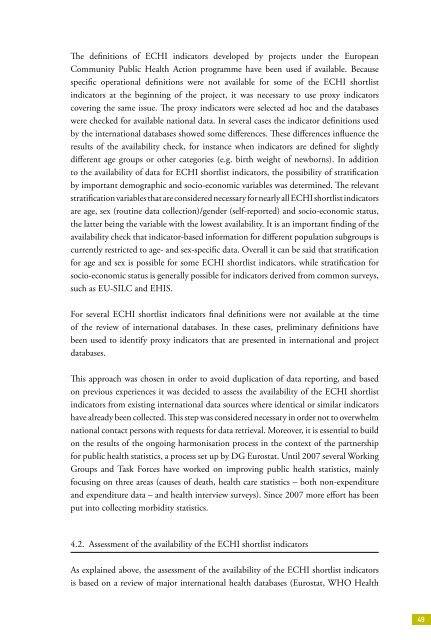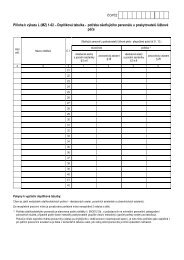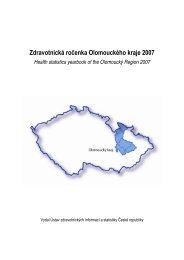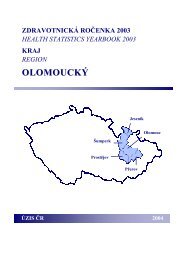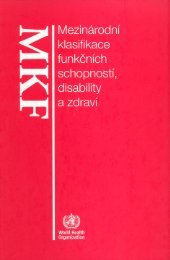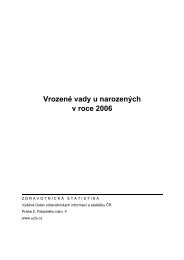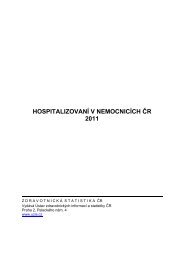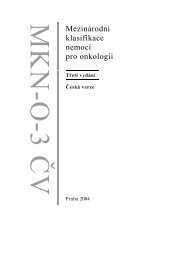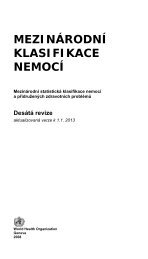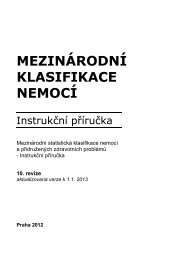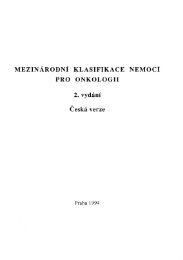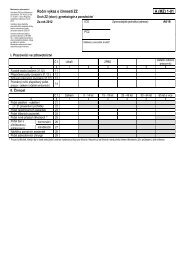ECHIM Final Report
ECHIM Final Report
ECHIM Final Report
Create successful ePaper yourself
Turn your PDF publications into a flip-book with our unique Google optimized e-Paper software.
The definitions of ECHI indicators developed by projects under the European<br />
Community Public Health Action programme have been used if available. Because<br />
specific operational definitions were not available for some of the ECHI shortlist<br />
indicators at the beginning of the project, it was necessary to use proxy indicators<br />
covering the same issue. The proxy indicators were selected ad hoc and the databases<br />
were checked for available national data. In several cases the indicator definitions used<br />
by the international databases showed some differences. These differences influence the<br />
results of the availability check, for instance when indicators are defined for slightly<br />
different age groups or other categories (e.g. birth weight of newborns). In addition<br />
to the availability of data for ECHI shortlist indicators, the possibility of stratification<br />
by important demographic and socio-economic variables was determined. The relevant<br />
stratification variables that are considered necessary for nearly all ECHI shortlist indicators<br />
are age, sex (routine data collection)/gender (self-reported) and socio-economic status,<br />
the latter being the variable with the lowest availability. It is an important finding of the<br />
availability check that indicator-based information for different population subgroups is<br />
currently restricted to age- and sex-specific data. Overall it can be said that stratification<br />
for age and sex is possible for some ECHI shortlist indicators, while stratification for<br />
socio-economic status is generally possible for indicators derived from common surveys,<br />
such as EU-SILC and EHIS.<br />
For several ECHI shortlist indicators final definitions were not available at the time<br />
of the review of international databases. In these cases, preliminary definitions have<br />
been used to identify proxy indicators that are presented in international and project<br />
databases.<br />
This approach was chosen in order to avoid duplication of data reporting, and based<br />
on previous experiences it was decided to assess the availability of the ECHI shortlist<br />
indicators from existing international data sources where identical or similar indicators<br />
have already been collected. This step was considered necessary in order not to overwhelm<br />
national contact persons with requests for data retrieval. Moreover, it is essential to build<br />
on the results of the ongoing harmonisation process in the context of the partnership<br />
for public health statistics, a process set up by DG Eurostat. Until 2007 several Working<br />
Groups and Task Forces have worked on improving public health statistics, mainly<br />
focusing on three areas (causes of death, health care statistics – both non-expenditure<br />
and expenditure data – and health interview surveys). Since 2007 more effort has been<br />
put into collecting morbidity statistics.<br />
4.2. Assessment of the availability of the ECHI shortlist indicators<br />
As explained above, the assessment of the availability of the ECHI shortlist indicators<br />
is based on a review of major international health databases (Eurostat, WHO Health<br />
49


